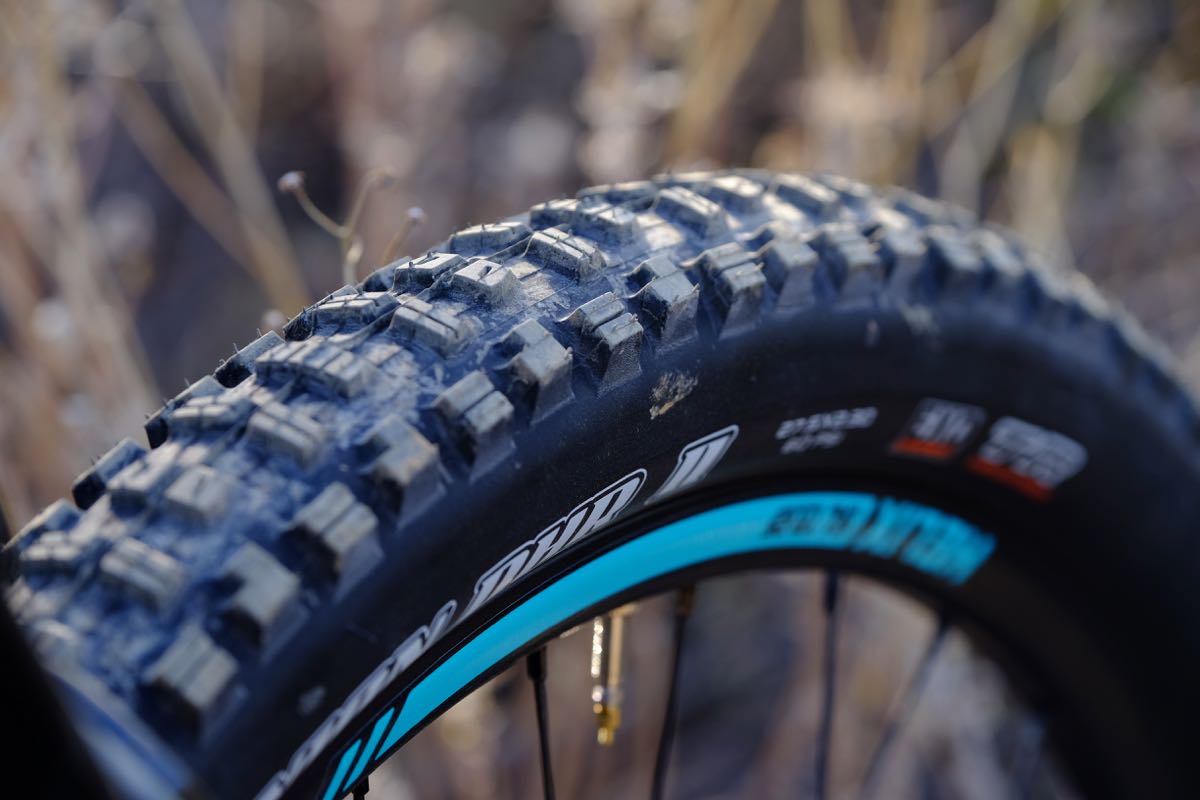Welcome to Tire Tech, Bikerumor’s mostly-weekly series on bicycle tires. Like our Suspension Tech and AASQ series, we take your questions about tires, whether it’s road, cyclocross, fat, plus, gravel, or mountain bike, and get answers from the brands and people behind them.
If you read our overview of knob types and what they’re designed to do, you know there are lugs shaped to aid in cornering, braking, and accelerating. It’s not enough to just create a few fancy rubber blocks and slap them on a casing. Given the forces applied to tire knobs, they have to be stout enough to gnash at the trail without flopping over or tearing off. In tire-tech parlance, an unsupported knob can cause “lug squirm,” the vague sensation of the tire not fully engaging the terrain.
The best way to reinforce a knob of any kind is to simply make it bigger, but you need enough tire real estate to do so. Another obvious drawback is the added weight of the extra material, the reduction in voids between the knobs, and the clumsy feel of a tire rolling on oversized chunks of rubber. So, bigger isn’t always better.
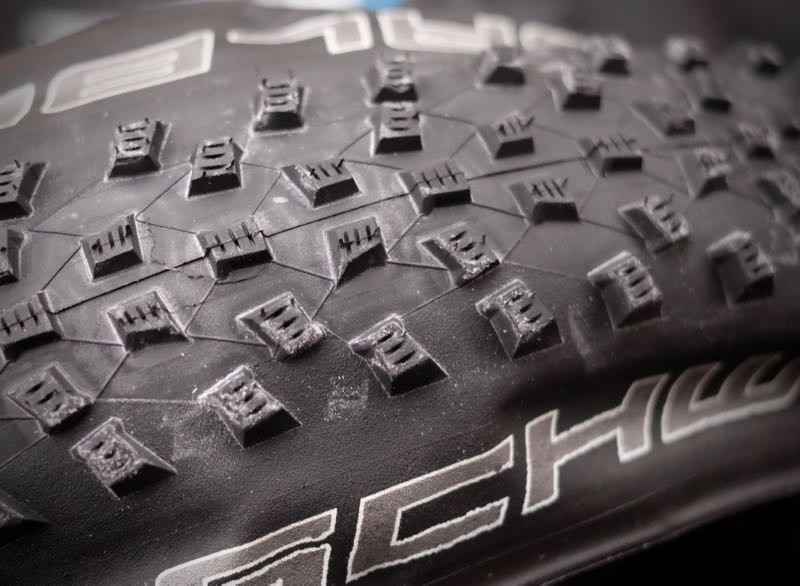
An efficient means of reinforcing knobs is with more sophisticated shaping of the knob itself. According to Tim Krueger of Terrene tires, the shape of a knob and how it is oriented on the tire is the first step in ensuring it can withstand the forces applied to it. By angling knobs in a certain direction, or building them with added layers or steps, a knob can be stiffened as desired. If you look at many enduro tires designed for aggressive cornering at high speed, the side knobs are shaped with a long outer edge, almost like an architectural buttress.
During our discussion about tread design with Tom Ritchey, he too mentioned how block shape contributes to its ability to stand up to dynamic forces. His use of Vector Force Analysis allows him to determine how much block edge to place perpendicular to a given force. He then assesses what degree of support that block will require in order to be effective. This guides the size of the block and what type of rubber might be needed to reinforce it. Ritchey mentioned the importance of base rubber and how it impacts lug support. Too little base rubber and tread blocks can easily sheer off the tire.
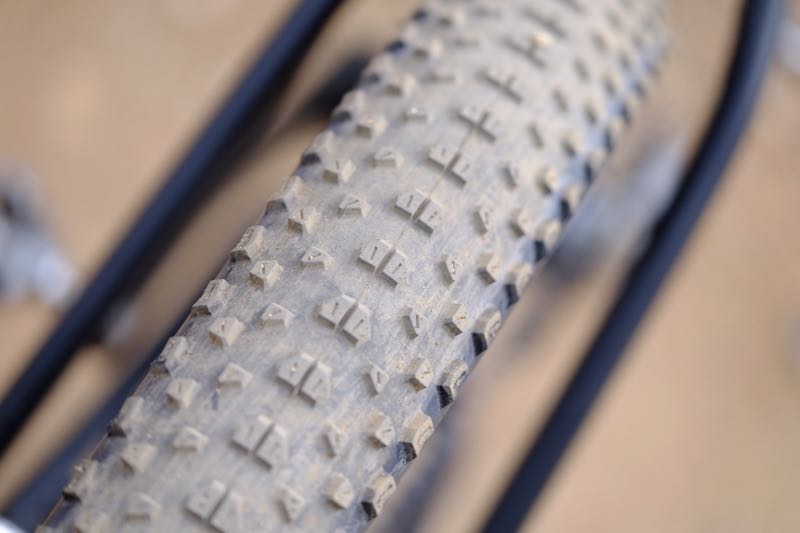
While talking with Brett Hahn of Continental, he was quick to point out the deep resources their engineering department has at their disposal. Continental is a €42 billion enterprise. Their mastery of rubber compounds allows them to create specific blends to meet the needs of a given tire. They can adjust their compounds to produce small but durable lugs designed to hold up to the rigors of XC racing, or softer compounds to produce knobs which yield more to the terrain.
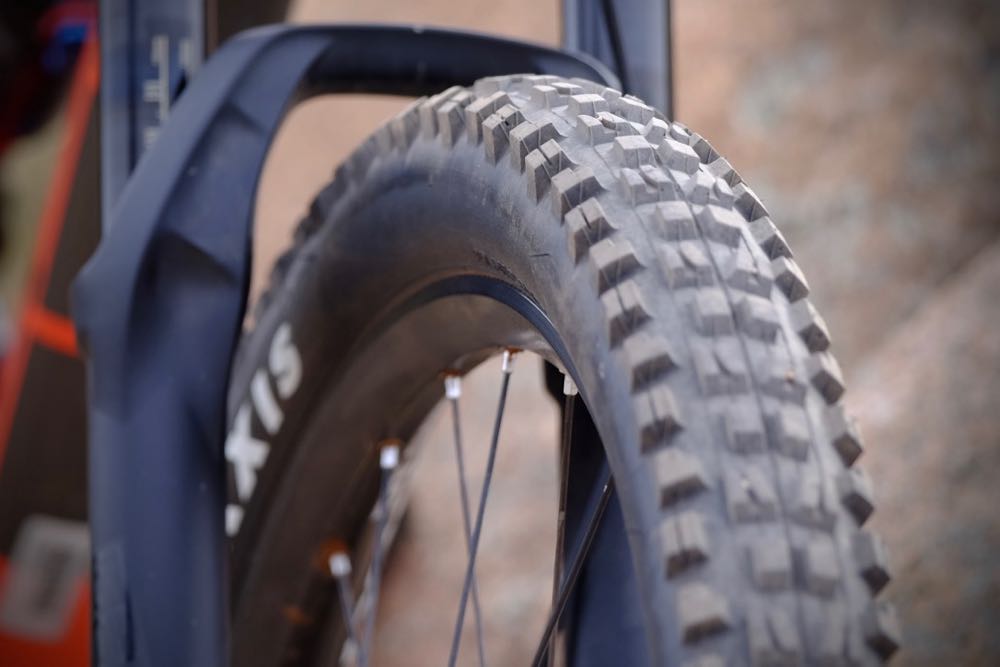 Other manufacturers mix rubber compounds with a firm base layer on which more pliable knobs are bonded. I recently interviewed Ken Avery of Vittoria tires. Now 20 years into the tire business, chances are many of you have ridden a tire of his design. When it comes time to reinforce the knobs in his designs, rubber compounds are essential to the process. The Vittoria 4C compound system allows them to use a firm rubber at the base of a lug, with a softer rubber at the contact point. We’ll dive into the science of rubber compounds another day. That’s a deep rabbit hole.
Other manufacturers mix rubber compounds with a firm base layer on which more pliable knobs are bonded. I recently interviewed Ken Avery of Vittoria tires. Now 20 years into the tire business, chances are many of you have ridden a tire of his design. When it comes time to reinforce the knobs in his designs, rubber compounds are essential to the process. The Vittoria 4C compound system allows them to use a firm rubber at the base of a lug, with a softer rubber at the contact point. We’ll dive into the science of rubber compounds another day. That’s a deep rabbit hole.
Perhaps the most effective way of bolstering the sturdiness of a tread block is to give it a good foundation. That starts with the tire carcass. If you read our primer on tire casings, you know the fabric bones of a tire determine how it rides. Atop the casing, and below the tread cap, are the additional layers used to improve flat protection and fine-tune ride characteristics. According to Hahn at Continental, “The layers applied within the tire determine where and how the casing flexes. That, in turn, can be used to influence how the tread pattern interacts with the ground.”
It’s also interesting where those belts or layers are positioned to support the knobs at the crown of the tire. That could be at the lowest point on the casing at the apex layer near the bead. As Bontrager’s Frank Stacy said, “A great tread pattern is nothing without the proper casing it is built around. The casing has an effect on the tread’s stability, handling, absorption, deflection, traction, rolling resistance, etc. All parts of the recipe have to work together.”
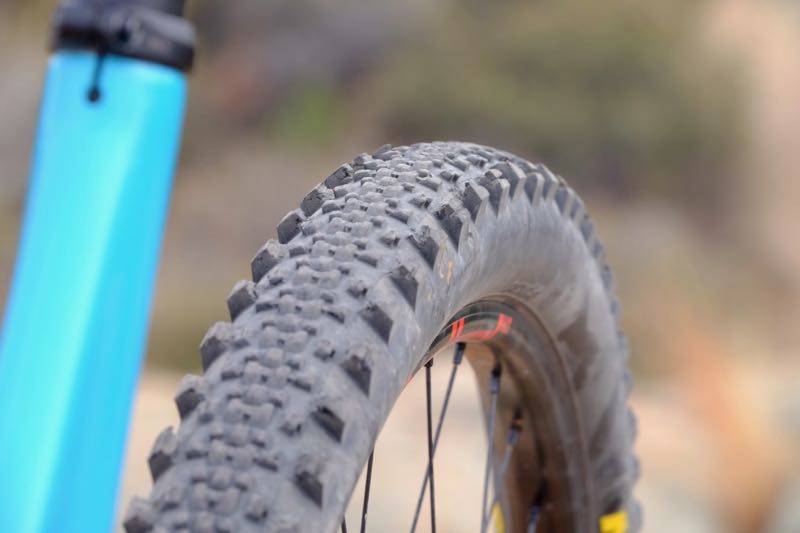
Hahn echoed those sentiments and explained how the individual lugs need the support of the casing. Even the shape of the profile has a critical effect on the tread in cornering transitions. As we learned from our discussion with Stacy in Part Two of our tread talks, they start with a tread design, then create the casing sub-layers required to make it work.
What does all of this mean for the consumer shopping for new tires? If you understand how a tire is made and how its unique construction plays into ride performance, you can make better tire buying choices. It helps you understand what you like and dislike about a tire, and why. If you dislike a tire, perhaps it’s your use of it that’s not ideal. It can also influence little things like your inflation decisions.
Air pressure is one more means of supporting tread features. Too little PSI and the knobs designed to claw at the trail simply depress into the tire carcass. Too much air and the bike only rides on the tippy-top of the lugs. Is the tire failing you, or are you failing the tire? The more you know about tire design, the better equipped you will be to answer that question.
As is so often the case, it is a combination of things that allow a particular lug to stand up to the forces applied to it. The size of the knob, its shape, and orientation on the tire are critical considerations. The rubber layer on which it is bonded and the composition of the rubber itself matter. The casing construction and lastly the amount of air pressure in the tire round out the final supporting elements.
Tires. Who knew they were so complicated?
Pumped on this? Got a tire-related question you want answered? Email us. Want your brand or product featured? We can do that, too.
